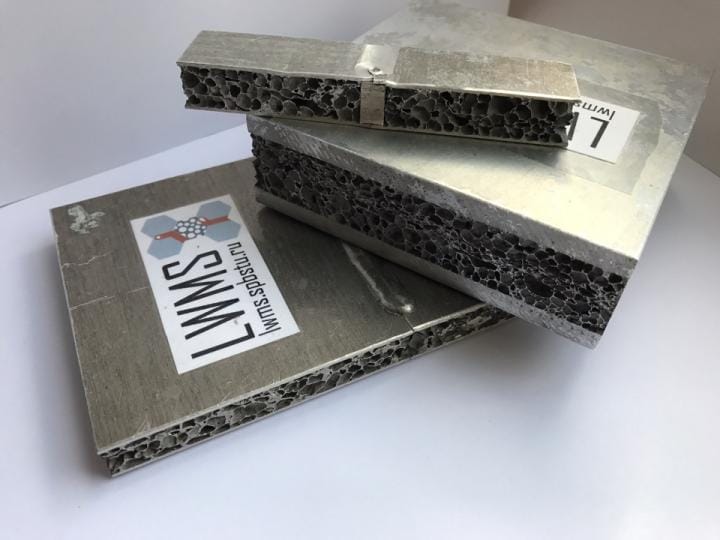
I’m reading research describing a method of producing a porous aluminum structure for ships that has some interesting implications for 3D printing.
The research, done at Peter the Great St. Petersburg Polytechnic University, describes a method for producing “unsinkable” aluminum. They have invented a process for reliably producing aluminum foam, which solidifies into a material that are very lightweight. A gas is introduced while the liquid aluminum is solidifying, resulting in a frozen foam of aluminum, seen at top.
When encased in a solid skin, this results in aluminum parts that are actually lighter than water, so long as the density is sufficiently low. The parts can still be quite strong, however.
The idea is that these aluminum parts could then be used to build ships that would not sink, even if their hull were severely compromised: the material itself would float.
That’s fascinating, but then I wondered how this approach could be used in 3D printing. Certainly there have been many instances of low-density parts being produced by including sparse lattice structures internally, but it’s different than this new non-3D “foam” print approach.
The foam approach produces a large number of sealed bubbles, each of which contains gas. A puncture in one is not a puncture in all, making the flotation reliable.
But that would not occur in a 3D printed lattice, as there is no captured gas; a single rupture would compromise the entire component.
There is another problem: with typical 3D metal printing equipment, you likely cannot produce a foam-like structure, as there would be no way to extract unfused metal powder after printing. Typically powder prints, metal or otherwise, must include a hole through which to drain excess powder. If you attempted to produce foam structures, they would be filled with heavy metal powder!
In order to 3D print metal floating components you almost certainly must use a different 3D printing process, one that doesn’t use a powder bed. Perhaps this could be done using a robotic deposition system, but producing countless small enclosed bubbles doesn’t sound particularly efficient.
It’s also very likely the foam approach would be vastly less expensive than using any current 3D metal printing process.
Producing lightweight 3D printed metal parts certainly could work for aircraft or space applications, where air or vacuum may freely pass through the interior structure of a component, but it seems that ocean applications may be much more problematic.
What is needed here is a different 3D metal printing process that can produce sealed foam bubbles. If such a system existed, then it might be possible to 3D print an entire ship hull with lighter-than-water material in unusual and innovative forms.
For now, though, it seems that ships would be constrained to the forms available with the non-3D printed foam approach or traditional shipbuilding techniques.
Via EurekaAlert

